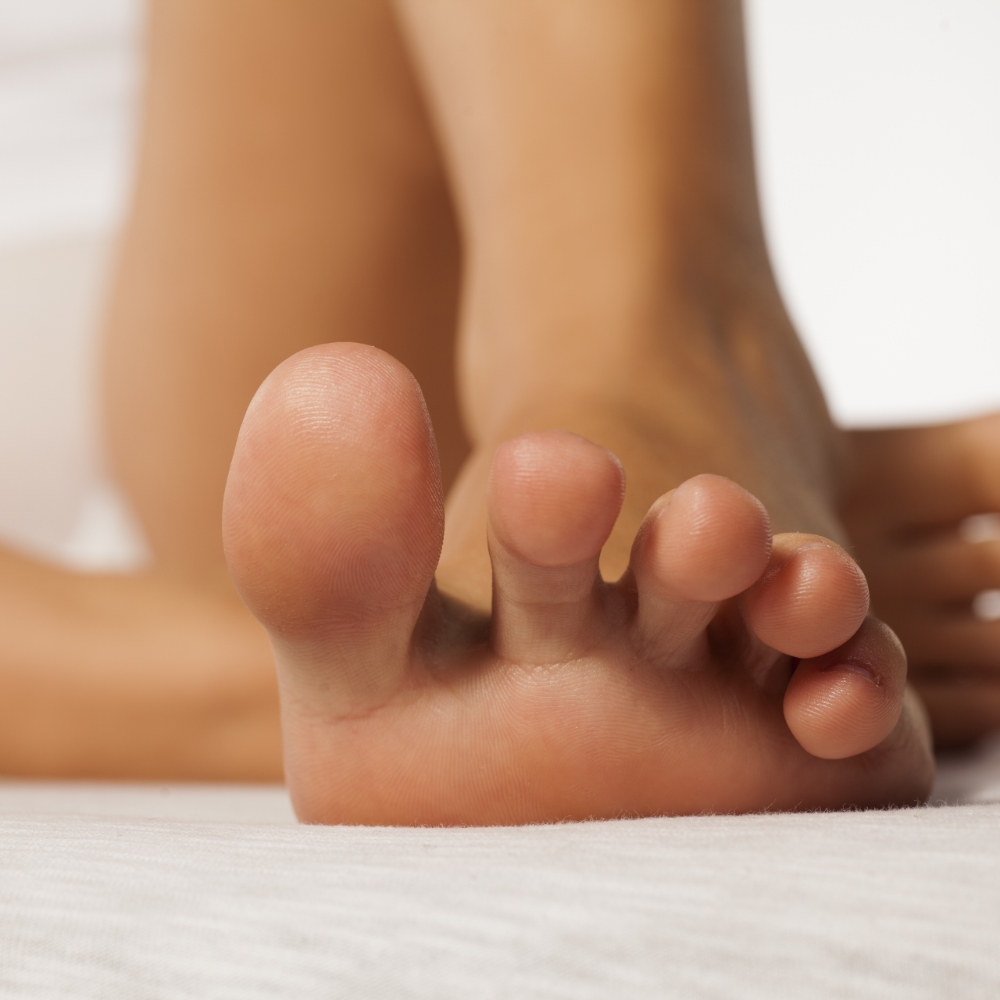Hammertoes
Hammertoes are a common toe deformity. And like many other deformities, such as bunions, they tend to start relatively hard to notice but become progressively worse and more impeding over the years.
Whether your hammertoes are in an early stage or have advanced to a severe degree, receiving expert care is an essential step toward managing symptoms and retaining future comfort and mobility.
What Are Hammertoes?
Hammertoes develop when instability occurs in the tendons that keep your toes straight during rest. If one tendon in a set contracts and another is unable to balance it out, the toe can remain stuck in a bent position.
The middle joint of a toe is frequently the one that is affected by this imbalance, although other joints along a toe can also be similarly bent (these conditions are sometimes known as “mallet toe” or “claw toe”). The second toe on each foot is the most likely to develop a hammertoe bend, but multiple hammertoes are also common.
What Causes Hammertoes?
Plenty of issues can contribute to the imbalance that causes hammertoes. The condition can be the result of a biomechanical problem or the side effect of a pre-existing condition.
Other abnormalities such as bunions and high arches can contribute to the development of hammertoes. So can past trauma to the toes that leave an imbalance in the tendon structure.
Your choice of shoes can also contribute to a developing hammertoe problem. Footwear that is too tight, has raised heels, or cramps the toes can place excess pressure on the forefoot and make hammertoes worse.
Symptoms and Effects of Hammertoes
Hammertoes can make life increasingly uncomfortable the more they progress.
A bent toe in itself can be rather uncomfortable, but it can also:
- Make it hurt to wear certain shoes.
- Develop corns and calluses where the toe rubs against the inside of shoes or other toes.
- Lead to burning sensations as the toe is irritated.
- Cause the development of sores in more severe situations.
Hammertoes are a progressive condition, and will almost always get worse the longer they go untreated. In the early stages, a hammertoe tends to be flexible and can still be straightened out by pressing on it. The joint will often stiffen over time, however, and eventually become completely stuck.
Treating Hammertoes
Often, surgery is not the only potential option for hammertoe management. In many cases, we can help alleviate symptoms and prevent further progression of a hammertoe using only conservative methods.
Dr. Melhuish will first thoroughly examine your condition to determine its severity and the best options for meeting your treatment needs. We may need X-rays or other diagnostic imaging to fully assess the current damage and check for other foot or ankle conditions that may be contributing to the problem.
One of the most important steps to hammertoe management will be making any necessary changes to your footwear to ensure you have plenty of room in the toe box for your toes to lie flat. Avoiding footwear with high heels or narrow, pointed fronts will be very important. Shoes with rounded ends and enough room to wiggle your toes freely will serve you much better through the future.
If you have a biomechanical abnormality (such as high arches) that influences your hammertoes, we may recommend custom orthotic inserts to provide corrective support and further reduce pressure against the forefoot. Additional support and comfort can be found through special pads and other equipment around the toes, and help protect against the development of corns or calluses.
Stretching and conditioning exercises may also help reduce discomfort and lessen further progression. Specific regimens can help relax tightened tendons, increase flexibility, and maintain range of motion in the toes. We can help you determine an optimal routine for your needs.
If conservative measures are not providing enough relief of your symptoms, surgery might then become a consideration. We will fully discuss all options with you and answer all questions you may have before you need to make any choice of how you wish to proceed with care.
Get Help for Hammertoes
Hammertoes are a common problem with many potential treatments. No matter whether your hammertoes are just starting to develop or have progressed significantly over the years, there is much that can be done to both help you now and for years to come.
Schedule an appointment with Sierra Foot & Ankle by phone or by filling out our online contact form.
Get In Touch
Address
2350 South Carson St
Suite 3
Carson City, NV 89701
Contact
Call: (775) 783-8037
Fax: (775) 782-3787
OPT-IN To Text:
By texting our office at
(775) 783-8037 from your mobile phone, you are consenting to receive SMS text messages from our staff. Reply STOP to unsubscribe.
*Read our Privacy Policy & Terms and Conditions.
Social




© Sierra Foot & Ankle. All Rights Reserved. Privacy Policy.
Web Design by CP Solutions. Marketed by VMD Services.


